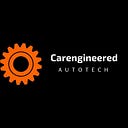All about Torque Converters
Manual Transmissions have the Clutch for the purpose of engaging and disengaging the transmission line from the engine line.
Torque Converters performs the same function as a clutch in an Automatic Transmission system.
What is a Torque Converter??
A Torque Converter is basically a type of fluid coupling, that is used to transfer the rotating power from the main source of the power production house to the receiving end.
The Torque Converters is located between the Flexplate from the engine side and the Transmission, like the clutch in a manual transmission system type.
What are the functions of Torque Converter??
The main function of the Torque converter are:-
- It transfers the power from the driving unit (The Engine) to the Transmission Input Shaft (Driven unit).
- It drives the front pump of the Transmission System.
- It also helps to isolate the engine from the load at the stationary position.
- It multiplies the torque, about double the input.
What are the main parts of Torque Converters??
Impeller or Pump
The impeller is connected to the housing and the housing connected to the engine shaft. It has curved and angled vanes.
It rotates with the engine speed and consists of automatic transmission fluid. As it rotates with the engine rotation, the centrifugal force forces the transmission fluid to move outwards.
The curved/Angled blades of the impeller are designed in such a way that they direct the Transmission fluid towards the turbine blades.
So, it acts as a centrifugal pump that sucks the fluid from the automatic transmission and delivers it to the turbine.
Turbine
The turbine is connected to the input shaft in an automatic transmission system. It is located on the engine side. It also consists of curved and angled blades.
The blades of the turbine are designed in such a way that it can deviate the direction of the Transmission fluid completely that strikes on its blades.
It is this change in the direction of the Transmission fluid that forces the blades to move in the same direction as of the pump/impeller.
As the turbine rotates the input shaft of the transmission also rotates and allows the vehicle to move. The turbine is also employed as a lock-up clutch on its back.
This lock-up clutch comes into play when the torque converter achieves its coupling point.
This lockup clutch helps eliminates the loses and improves the volumetric efficiency of the converter.
Stator
The stator is located in between the Pump and the Turbine. The main function of the stator is to give direction to the returning Transmission fluid from the turbine so that the fluid enters the impeller in the same direction of its rotation.
As the fluid enters in the direction of the impeller, it multiplies the magnitude torque. So the stator helps in the torque multiplication by changing the direction of the fluid and allows it to enter in the same direction of the impeller rotation.
The stator changes the direction of fluid almost up to 90 degrees. The stator is mounted with a one-way clutch system that allows rotating it in only one direction and restricts its rotation in any other direction.
The turbine is connected to the transmission system of the vehicle.
Transmission Fluid
The transmission fluid is an important integral part of the torque converter.
It is used to provide the fluid coupling and smooth start, without stalling the engine when the vehicle is stopped in a gear.
Working Principle of Torque Converter
It has 3 stages namely
Stall
Stall position is also called as the Stop position. During the stall (stop) condition of the vehicle, though the engine is continuously applying power to the impeller the turbine could not rotate.
This situation converts when the vehicle is in stationary and the driver has kept his foot on the brake paddle to restrict it from moving.
During this condition maximum multiplication of torque takes place. When the driver removes its foot from the brake paddle and presses the accelerator paddle, the impeller starts moving faster and this allows the turbine to rotate.
In this situation, there is a larger difference between the pump and the turbine rotational speed. The impeller speed is much greater than the turbine speed due to the initial stoppage.
Acceleration
During the acceleration condition, the turbine speed keeps on increasing gradually, but still, there is a large difference between the impeller and turbine rotational speed.
As the speed of the turbine increases the torque multiplication gradually reduces. During acceleration of the vehicle the torque multiplication is lower than that is achieved during a stall condition.
Coupling
In this condition, the turbine reaches approximately 80–90 percent speed of the impeller and this point is called the coupling point.
The torque multiplication seizes and approaches to zero and the torque converter behaves just like a normal fluid coupling mechanical device.
At the coupling point, the lock-up clutch comes into the play/action and locks up the turbine to the impeller of the converter. This makes the turbine and impeller to move at almost the same rotational speed.
During coupling, the stator also starts to rotate in the direction of the impeller and turbine rotation.
Types of Torque Converters
1. Single-Stage Torque Converters
The beauty of single-stage converters is a tough, reliable simplicity. Each converter consists basically of three elements: the turbine, the stator, and the impeller. Single-stage converters come in two types of housing, stationary and rotating.
High-torque ratio converters with stationary housing consist of extraordinary hoisting and lowering capabilities.
2. Three Stage Torque Converters
Three-stage torque converters employ three rings of turbine blades, two sets of stator blades. The effect of this design is an increased amount of torque, reaching up to five times the amount of engine output torque, in fact, when the engine is even at a stall condition.
Originally published at https://www.carengineered.com on July 29, 2020.
